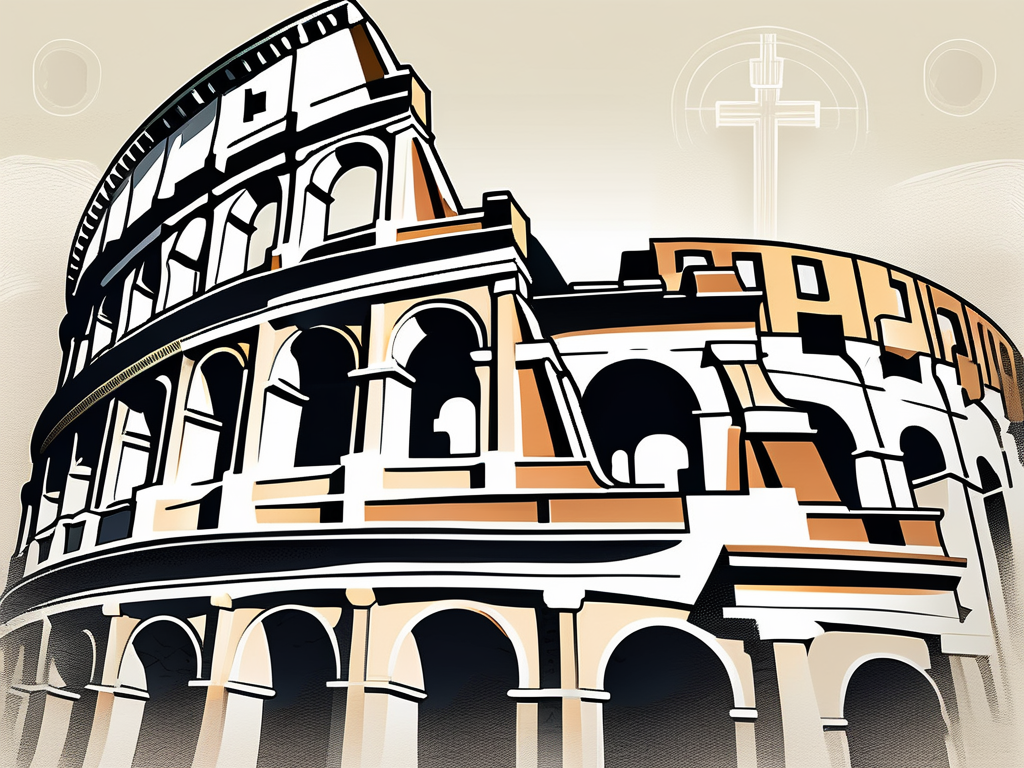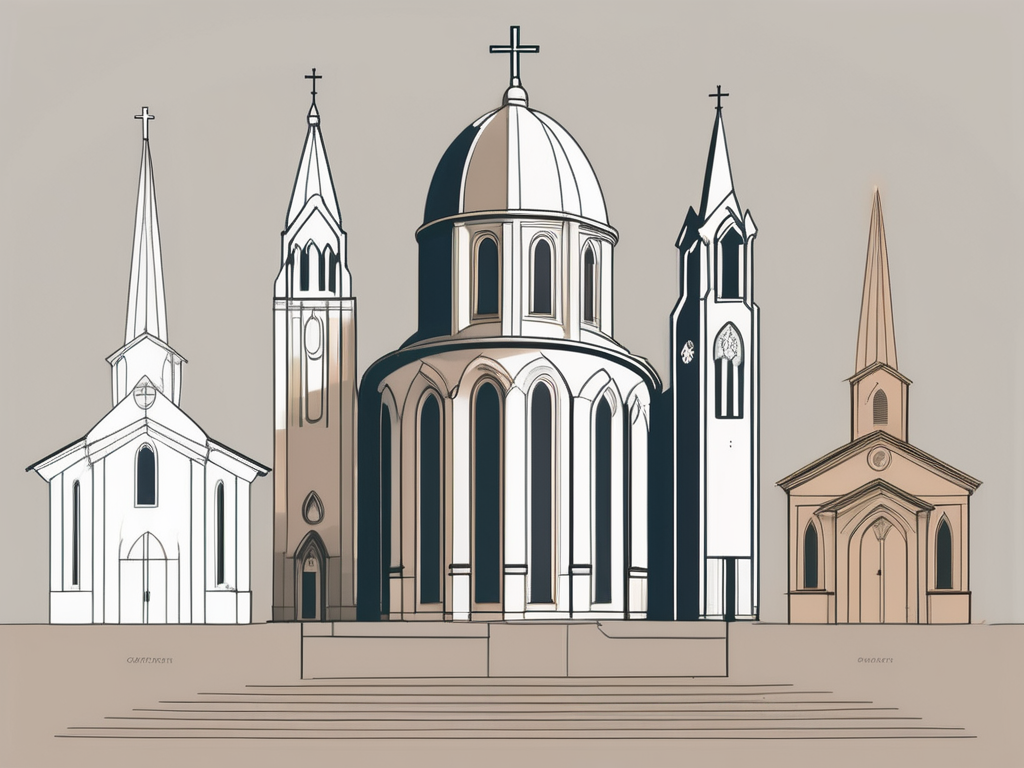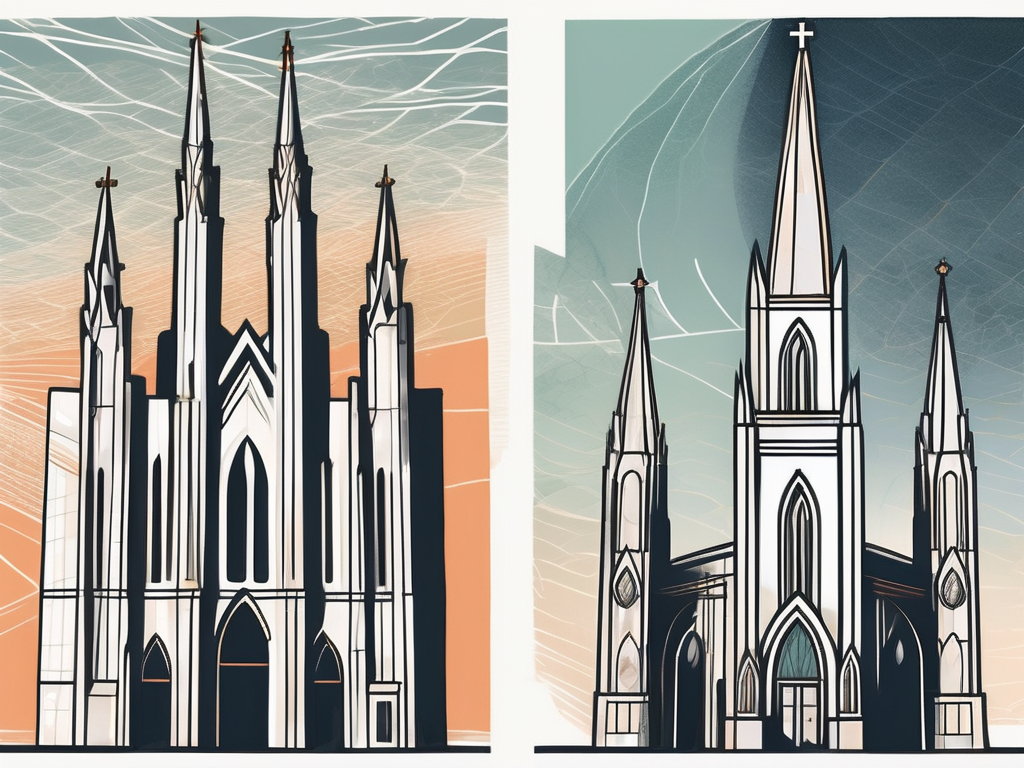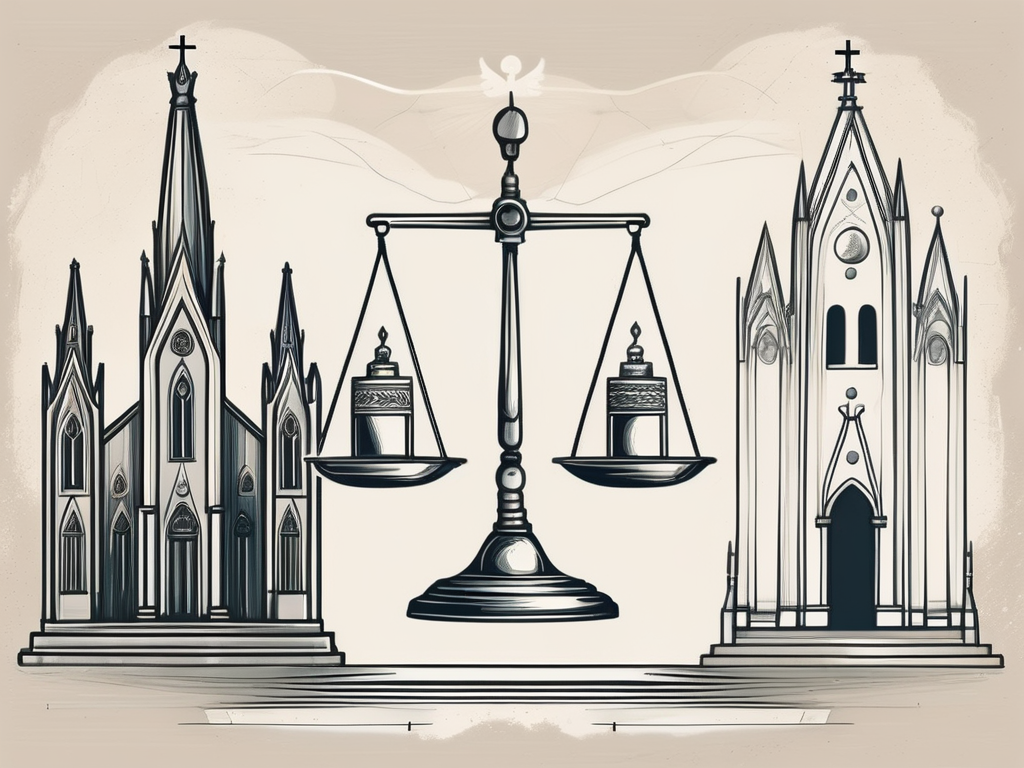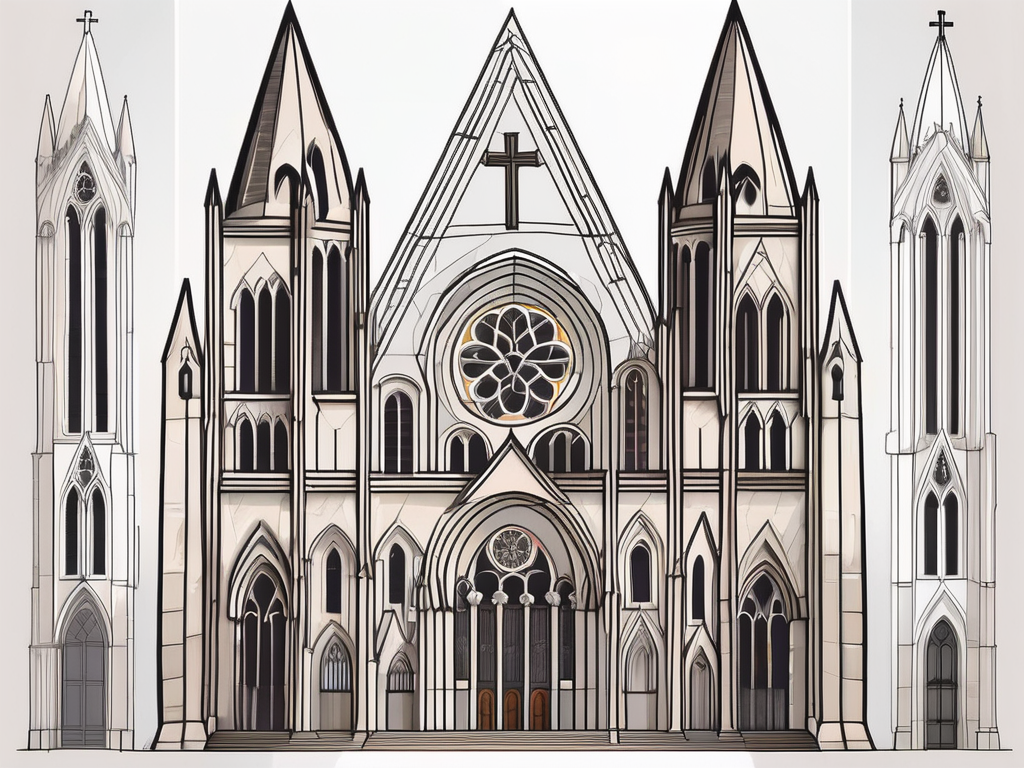In this article, we will embark on a historical exploration of the Roman Catholic Church – its origins, development, key events, and its relevance in the modern world. From the early days of its foundation to its present-day global influence, the Roman Catholic Church has played a significant role in shaping the course of history.
Understanding the Roman Catholic Church
The Roman Catholic Church, also known simply as the Catholic Church, is the largest Christian denomination worldwide. It traces its roots back to the time of Jesus Christ and his apostles. At its core, Catholicism teaches that Jesus is the Son of God, and through his death and resurrection, he offers salvation to all who believe in him. The Church places great emphasis on the sacraments, especially the Eucharist, which represents the body and blood of Christ.
The Catholic Church has a rich and complex history that spans over two thousand years. It has played a significant role in shaping Western civilization and has been a central institution in the lives of millions of people around the world. The Church’s teachings and practices have evolved over time, influenced by various historical, cultural, and social factors.
One of the key aspects of Catholicism is its hierarchical structure. The Pope, who is considered the successor of Saint Peter, is the head of the Church and holds the highest authority. Bishops, priests, and deacons are also important figures within the Church’s hierarchy. They are responsible for overseeing the spiritual needs of the faithful, administering the sacraments, and providing guidance and pastoral care.
Key Figures in the Roman Catholic Church
Throughout its history, the Roman Catholic Church has been influenced by numerous key figures who have left their mark on the faith. One such figure is Saint Peter, whom Catholics believe was the first pope. Saint Peter’s role as the leader of the apostles and the foundation of the Church has been a cornerstone of Catholic theology and ecclesiology.
Another influential figure in the Catholic Church is Saint Augustine, a theologian and philosopher who lived in the 4th and 5th centuries. His writings, such as “Confessions” and “City of God,” have had a profound impact on Christian thought and continue to be studied and revered by theologians and scholars today. Saint Augustine’s teachings on original sin, grace, and the nature of God have shaped Catholic theology for centuries.
Saint Francis of Assisi is yet another significant figure in the history of the Catholic Church. He is known for his radical commitment to poverty, simplicity, and love for all of God’s creation. Saint Francis founded the Franciscan Order, which emphasized a life of humility, service, and devotion to God. His example of selflessness and compassion continues to inspire Catholics to this day.
Saint Thomas Aquinas, a Dominican friar who lived in the 13th century, is considered one of the greatest theologians in Catholic history. His work, particularly his masterpiece “Summa Theologica,” synthesized Christian theology with the philosophy of Aristotle, creating a comprehensive system of thought that continues to shape Catholic intellectual tradition. Saint Thomas Aquinas’ writings on the existence of God, ethics, and the relationship between faith and reason have had a lasting impact on Catholic philosophy and theology.
These individuals, along with many others, have shaped church doctrine, spirituality, and the moral teachings that guide Catholic adherents. Their contributions have helped to define the Catholic Church as a vibrant and diverse religious institution that continues to evolve and adapt to the challenges of the modern world.
The Birth of the Roman Catholic Church
The Role of Jesus Christ and His Apostles
The roots of the Roman Catholic Church can be traced back to Jesus Christ and his twelve apostles. According to Catholic belief, Jesus founded the Church by appointing Peter as its leader and commissioning the apostles to spread his teachings throughout the world. This commissioning of the apostles is often referred to as the “Great Commission,” where Jesus instructed them to “go and make disciples of all nations” (Matthew 28:19).
The apostles played a crucial role in the early development of the Church. They traveled far and wide, sharing the message of Jesus and establishing communities of believers. Each apostle had a unique role and contribution, bringing diverse perspectives and experiences to the growing Church. Their teachings and writings formed the foundation of Christian doctrine and provided guidance for future generations.
One of the most significant figures among the apostles was Peter, whom Jesus appointed as the “rock” upon which he would build his Church (Matthew 16:18). Peter’s leadership and authority were seen as essential for maintaining the unity and integrity of the Church. This belief in the primacy of Peter’s role as the first pope has been a defining characteristic of the Roman Catholic Church throughout its history.
The Church in the Roman Empire
During the first few centuries, the Roman Catholic Church faced various challenges within the Roman Empire. Initially, it was a small, persecuted community. The followers of Jesus faced hostility and persecution from both the Jewish religious authorities and the Roman government. Despite these challenges, the early Christians remained steadfast in their faith, often enduring persecution and martyrdom for their beliefs.
However, over time, the Roman Catholic Church gained strength and gradually permeated various parts of the Empire. The message of Jesus resonated with people from all walks of life, and the Church grew in numbers and influence. The early Christians established communities and worshiped in secret, often in catacombs or private homes, to avoid detection and persecution.
With the conversion of Emperor Constantine in the 4th century, the Church’s status changed dramatically. Constantine’s Edict of Milan in 313 AD granted religious tolerance to Christians, effectively ending the persecution they had faced for centuries. This pivotal moment marked the beginning of a new era for the Roman Catholic Church.
Constantine’s conversion to Christianity not only brought an end to persecution but also led to the Church’s integration into the Roman Empire. The emperor’s patronage and support allowed the Church to flourish and expand its influence. Churches were built, and Christian practices were openly celebrated. The Roman Catholic Church became an integral part of the Empire’s social fabric, with bishops assuming prominent roles in local governance and decision-making.
As the Church grew in power and influence, it faced new challenges and controversies. Doctrinal disputes arose, leading to the convening of ecumenical councils to address theological issues and establish orthodox teachings. These councils played a crucial role in shaping the beliefs and practices of the Roman Catholic Church, ensuring its unity and doctrinal consistency.
The birth of the Roman Catholic Church was a complex and multifaceted process, shaped by the teachings of Jesus Christ, the missionary efforts of the apostles, and the changing political landscape of the Roman Empire. Its early struggles and eventual triumphs laid the foundation for the Church’s enduring presence and influence in the world.
The Development of the Church’s Structure
The Papacy and Its Evolution
The papacy is one of the defining characteristics of the Roman Catholic Church. Over the centuries, the role and authority of the pope have developed and evolved. Today, the pope is regarded as the successor of Saint Peter and the visible head of the Church. The papacy has played a critical role in guiding the Church through its history and providing a sense of unity among its followers.
The evolution of the papacy can be traced back to the early days of Christianity. In the first few centuries, the bishop of Rome held a position of honor and respect among other bishops. However, it was not until the 4th century that the bishop of Rome began to assert his authority over other bishops and claim a special role as the successor of Saint Peter.
One of the key moments in the development of the papacy was the pontificate of Pope Leo I, also known as Leo the Great, in the 5th century. During his time as pope, Leo I played a crucial role in asserting the authority of the papacy and defending the Church against heresy. His teachings and writings laid the foundation for the papal primacy that would become a central feature of the Roman Catholic Church.
Throughout the Middle Ages, the power and influence of the papacy continued to grow. Popes like Gregory I, also known as Gregory the Great, expanded the authority of the papacy and played a significant role in shaping the Church’s doctrine and organization. The papacy became not only a spiritual authority but also a political force, with popes exerting their influence over kings and emperors.
Councils and Their Impact
Throughout history, various councils have been convened to address theological disputes, clarify church doctrine, and make important decisions. These councils, such as the Council of Nicaea and the Council of Trent, have had a significant impact on the development and direction of the Roman Catholic Church. They have shaped the beliefs and practices of Catholics worldwide and provided a platform for the resolution of doctrinal and disciplinary matters.
The Council of Nicaea, held in 325 AD, was one of the most important councils in the early Church. It was convened by Emperor Constantine to address the Arian controversy, which centered around the nature of Christ. The council affirmed the divinity of Christ and formulated the Nicene Creed, which remains a central statement of faith for Catholics today.
Another significant council in the history of the Church was the Council of Trent, held in the 16th century. This council was called in response to the Protestant Reformation and aimed to address the theological and disciplinary issues raised by the reformers. The Council of Trent reaffirmed Catholic teachings on key doctrines such as justification, the sacraments, and the authority of the Church. It also initiated important reforms within the Church, including the establishment of seminaries for the training of priests.
These councils, along with many others throughout history, have played a crucial role in shaping the structure and beliefs of the Roman Catholic Church. They have provided a forum for debate and discussion, allowing the Church to respond to the challenges and changes of each era. The decisions and pronouncements made in these councils have had a lasting impact on the Church and continue to guide its teachings and practices today.
Key Events in the Church’s History
The Great Schism
One of the most significant and transformative events in the history of the Roman Catholic Church was the Great Schism in 1054. This event led to the permanent division between the Roman Catholic Church in the west and the Eastern Orthodox Church in the east. The split had profound implications for both sides and marked a turning point in the religious landscape of Europe and beyond.
The Crusades and Their Influence
The Crusades, a series of military campaigns sanctioned by the Church in the Middle Ages, left a lasting impact on the Roman Catholic Church and European society as a whole. These holy wars, aimed at reclaiming Jerusalem from Muslim control, brought about cultural exchanges and new perspectives, but also led to clashes and suffering. The Crusades fueled religious fervor and shaped the political and social dynamics of the time.
The Roman Catholic Church Today
Modern Challenges and Changes
In the present day, the Roman Catholic Church faces various challenges, both from within and outside its ranks. Issues such as declining church attendance, changing societal attitudes, and scandals have tested the resilience of the Church and its ability to adapt to a rapidly evolving world. With these challenges come changes, as the Church strives to address its shortcomings and engage in dialogue with different sectors of society.
The Church’s Global Influence
Despite the challenges it faces, the Roman Catholic Church remains a globally influential institution. With over a billion followers worldwide, it plays a vital role in shaping social justice movements, education, healthcare, and humanitarian efforts. The Church’s teachings on matters such as human rights, the environment, and poverty continue to resonate with many around the world, ensuring that its influence stretches far beyond theological matters.
In conclusion, the Roman Catholic Church has a rich and complex history that spans over two millennia. From its humble beginnings during the time of Jesus Christ to its present-day global influence, the Church has weathered numerous challenges and changes. Despite its flaws, the Roman Catholic Church continues to provide spiritual guidance and support to millions of believers worldwide. Its enduring impact on society and its commitment to serving the common good make it a fascinating subject of historical exploration.
